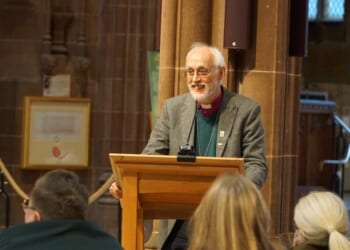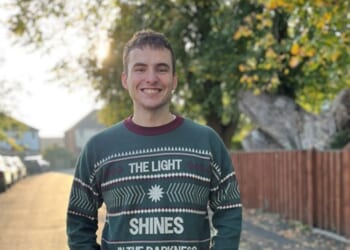(LifeSiteNews) — In a recent New York Times op-ed, three transplant center-affiliated doctors proposed broadening the legal definition of death in order to obtain more organs for transplantation. Interestingly, at the end of their article, they admitted that we have done this before:
In 1968, a committee of doctors and ethicists at Harvard came up with a definition of brain death – the same basic definition most states use today. In its initial report the committee noted that “there is great need for the tissues and organs of the hopelessly comatose in order to restore health to those who are still salvageable.” This frank assessment was edited out of the final report because of a reviewer’s objection. But it is one that should guide death and organ policy today.
Brain death/death by neurologic criteria
Shortly after Dr. Christiaan Barnard performed the first heart transplant, 13 men at Harvard Medical School proposed the idea of brain death in a landmark paper, “A Definition of Irreversible Coma.” Their article has no scientific references, and begins “Our primary purpose is to define irreversible coma as a new criterion for death.”
Without tests, studies, or evidence, these men decided that certain people in a coma (who had always previously been considered to be alive) could be redefined as being dead. The only rationale given by the committee as to why comatose people should be reclassified as corpses was utility. They said these people’s lives were a burden to themselves and others, and that redefining them as being dead already would free up beds in intensive care units and remove the controversy about procuring their organs.
READ: Here’s how organ harvesters get away with making patients ‘brain dead’
This new definition certainly was of great utility because it allowed doctors to skirt the dead donor rule. The dead donor rule is an ethical maxim that states people must neither be alive when organs are removed nor killed by the process of organ removal. By simply redefining people with severe brain injury as being dead already, the letter of the dead donor rule is met by sleight of hand. But changing a definition does not change reality. People with a brain death diagnosis are neurologically injured, and their prognosis may be death, but they are not dead already.
God is the sole author and giver of life. He Himself gives to all people life and breath and all things (Acts 17:25b), for in Him we live and move and exist (Acts 17:28). We are created by Him as a tight union of material flesh and immaterial spirit, a body-spirit composite. The Bible contradicts the materialist view that we are just our brains. “Then the LORD God formed the man of dust from the ground, and breathed into his nostrils the breath of life; and the man became a living person.” (Genesis 2:7) In 1312, the Council of Vienne recognized this biblical teaching and defined the soul as the form – the immediate principle of life and being – of the human body.
Death occurs when the immaterial spirit separates from the material body. But because we don’t have any instrument to detect the exact moment the spirit departs, historically people have used the index signs of loss of heartbeat, loss of breathing, and the passage of time to be certain that death has occurred. Our traditions of the vigil, the visitation, and the wake allowed for both certainty that death had occurred and time for grieving. But a brain death diagnosis ignores the question of whether the God-given spirit has departed, substituting the departure of neurologic function.
Dr. Edmund D. Pellegrino, founding director of the Pellegrino Center for Bioethics at Georgetown University, argued against brain death:
The only indisputable signs of death are those we have known since antiquity, i.e., loss of sentience, heartbeat, and breathing; mottling and coldness of skin; muscular rigidity; and eventual putrefaction as the result of generalized autolysis of body cells.
I have chosen to give priority to the welfare of the patient before he or she becomes a donor on grounds that harm must not be done even if good comes from it. No person should be sacrificed as a means for the good of another. This is a moral precept that recognizes the intrinsic worth of every human being.
READ: ‘Brain dead’ people are being used as lab rats for gene-edited animal organ transplants
Doctors have been questioning the concept of brain death for many years, despite the fact that “there are consequences to questioning the status quo regarding the harvest of organs from patients declared dead by neurologic criteria.”
From its inception, “brain death” has been driven by the desire for viable organs. Dr. Eelco F. Wijdicks, an author of the 1995, 2010, and 2023 American Academy of Neurology (AAN) brain death guidelines, said in 2006:
… the diagnosis of brain death is driven by whether there is a transplantation programme or whether there are transplantation surgeons. I do not think brain death examination now, in practice, would have much if any meaning if it were not for the sake of transplantation. [This quotation is found on p. 50 here.]
Research has proven that people with a diagnosis of brain death still have brain functions: 20 percent (of those tested) have EEG activity, and more than 50 percent still have a functioning hypothalamus, which is a part of the brain. Also, the well-known abilities of “brain dead” people, such as wound healing, fighting off infections, delivering healthy babies, and having an intact stress response to the incision to remove organs all show that they are still alive.
The latest (2023) AAN brain death guideline admits that there is no good scientific evidence for brain death in its methods section. “Because of a lack of high-quality evidence on the subject,” the new guideline was determined by three rounds of anonymous voting. It is troubling that after nearly 60 years of declaring people to be brain dead, there is still no high-quality evidence for this diagnosis.
READ: Trump HHS finds patients are being taken for organ retrieval while still alive
Moreover, the way that doctors diagnose brain death using the AAN guideline does not comply with the law under the Uniform Determination of Death Act (UDDA). The law requires the irreversible cessation of all functions of the entire brain, including the brain stem for a neurologic determination of death. But the AAN brain death examination only checks for coma, the loss of a handful of brain stem reflexes, and lack of spontaneous breathing. Also, the AAN guideline explicitly states that brain death may be declared in the presence of ongoing brain function: the function of the hypothalamus. This is at variance with the law which requires that all functions of the entire brain must have irreversibly ceased.
Brain death is not death because the brain death concept does not reflect the reality of the phenomenon of death. Therefore, any guideline for its diagnosis will have no basis in scientific facts.
People declared brain dead are neurologically disabled, and their prognosis may be death, but they are still alive. Living people with a poor prognosis should not be redefined as being dead for the sake of organ donation.
Heidi Klessig, MD, is a retired anesthesiologist and pain management specialist who writes and speaks on the ethics of organ donation and transplantation. She is the author of “The Brain Death Fallacy” and her work may be found at respectforhumanlife.com.















